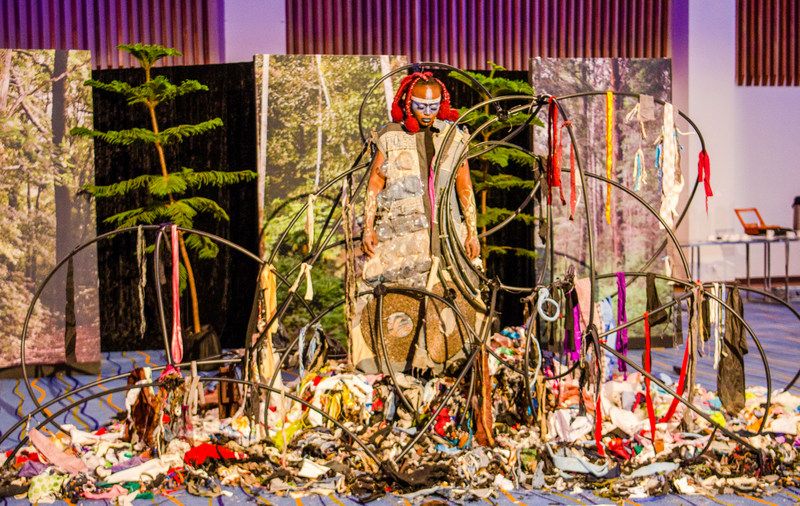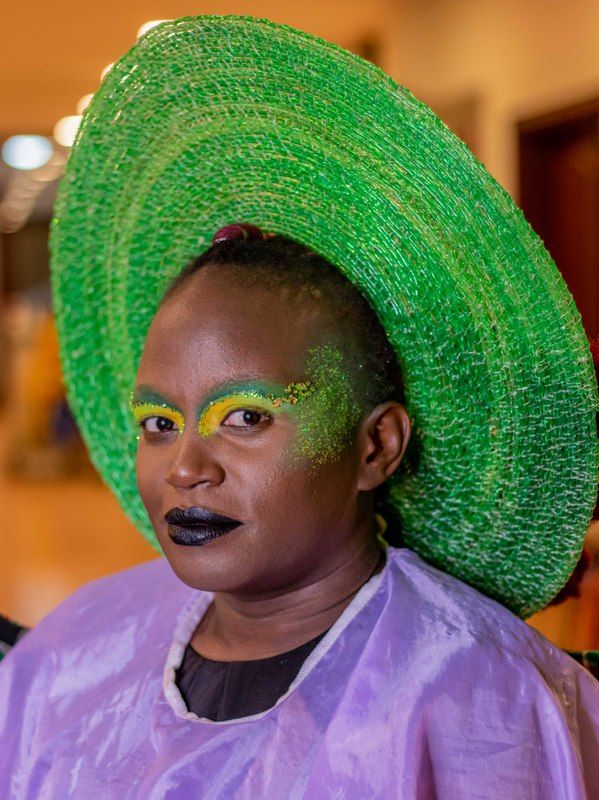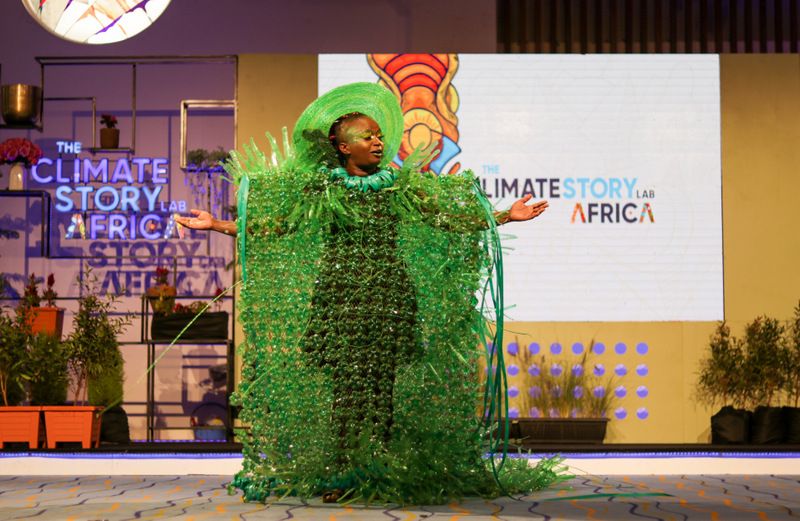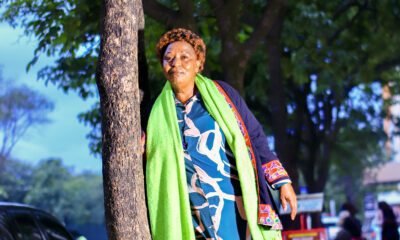Inspired
Green Bottles & Blue Denim – An Artivist’s Guide to Saving the Planet
by Atieno Odera for Bird Story Agency

A woman in a costume made of over 500 green plastic bottles struts onstage in a fully packed auditorium at the Climate Story Lab Africa 2022 edition.
“Kiragala Kiragala! Chetwagalo Kulagula! The energy is rising, filling up the air! Forests are burning, burning the green away! Swamps are flooding—plastics everywhere,” she sings dramatically.
Her words charge the atmosphere as they bounce through the echoey walls. The audience is left on the edge of their seats.
Kiragala, Luganda for “green,” is Sandra Suubi’s latest installation. With this sculpture that can be worn, the Ugandan artist who cares about social issues wants people to rethink their single-use plastic habits.
For more than eight years, Suubi has been at the forefront of climate justice. Besides plastic repurposing, she also explores other themes around environmental sustainability.

At the Climate Story Lab, she had two other presentations: The Blues and Olugoye Lwaffe.
In The Blues, she painted a picture of how the production of denim jeans was hazardous to the environment, while her Olugoye Lwaffe wearable sculpture drew attention to the effects of second-hand clothing on the environment.
“I aim to create a one-acre-long dress. At the Climate Story Lab 2022, in Nairobi, I was presenting only a quarter to highlight how each of the clothes that we individually and constantly buy compounds over a period of time. My question to the people is, “Do you know how many clothes you buy per week, day, month, or year?” We buy more clothes without thinking about what we already have,” said Suubi.

“This piece is made of many clothes sewn together into one massive dress and allows many people to wear it, demonstrating that an individual action greatly affects everyone else wearing the dress.”
In this presentation, Suubi challenged the audience to think twice before buying more clothes.
Suubi has changed her community through her art and music, which she mostly performs in public places like markets. This shows how important art is on the path to net zero.
“The response in different communities has been potent and humbling at the same time. I remember when I used to make site-specific sculptures alone. I’d go to a community, collect what they considered trash together with them, and we’d have learning sessions where we shared and experimented with the material to build sculptures. People always had so many questions and an interest in the work and why we were doing it,” she said.
“Now that I combine music with art, the response has been more impactful. The communities listen to the songs when I perform and see me wearing these sculptures made from found objects. Many times they never forget the message when it’s put on a song,” said the award-winning artist.
Photo Credits: Sandra Suubi




















